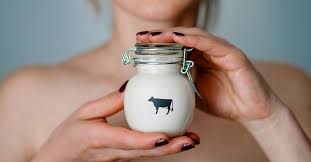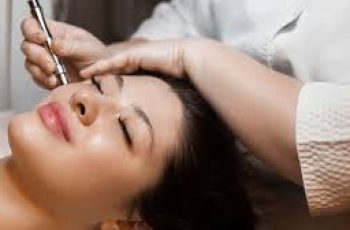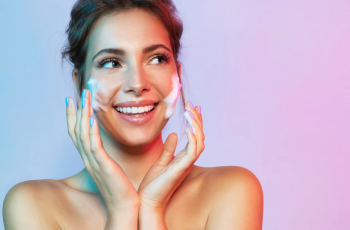
The Science of Beef Tallow in Skin Care: Benefits, Drawbacks, and Dermatological Considerations
In the ever-evolving world of skincare, traditional and ancestral remedies are often reexamined under the lens of modern science.
One such ancient practice making a comeback is the topical use of beef tallow—rendered animal fat—particularly as a natural moisturizer.
Promoted by advocates of minimalist and natural beauty, beef tallow is often marketed as a miracle ingredient for dry or sensitive skin.
However, when it comes to formulating evidence-based skincare routines, especially for acne-prone individuals, not all “natural” solutions are without risks.
In this blog, we explore the science behind beef tallow in skincare: its chemical makeup, purported benefits, potential drawbacks, and its appropriateness across different skin types.
We’ll also provide alternative recommendations for those looking to nourish their skin without risking irritation or breakouts.
🎁 Reader Bonus: As a thank you for investing in your skincare education, enjoy 20% off your next purchase with code STSBlog20 at checkout!
What Is Beef Tallow?
Beef tallow is a type of rendered fat derived from cows. It’s created by slowly heating beef suet or raw fat until the solids (called cracklings) separate from the liquid fat.
Once cooled, it solidifies into a creamy, waxy substance that’s rich in saturated fats.
Traditionally used in cooking and candle making, beef tallow has re-entered the skincare arena as a purportedly “natural” moisturizer.
The simplicity of its preparation and composition makes it attractive to proponents of clean beauty.
But simplicity doesn’t always equate to safety or effectiveness—especially when it comes to delicate or acne-prone skin.
What Is Beef Tallow Made Of?
The main components of beef tallow are triglycerides, which are compounds formed from glycerol and three fatty acids. The fatty acids most commonly found in beef tallow include:
Stearic Acid – A saturated fat that helps improve skin texture and flexibility, often used in moisturizers to strengthen the skin barrier.
Palmitic Acid – Provides a protective layer on the skin and helps reduce transepidermal water loss (TEWL).
Oleic Acid – A monounsaturated fat known for its deep moisturizing capabilities but also associated with pore-clogging tendencies, especially in acne-prone individuals.
Linoleic Acid – An essential fatty acid that is beneficial for balancing oily skin and supporting acne-prone complexions. Beef tallow contains this in small amounts.
In addition to fatty acids, beef tallow also naturally contains fat-soluble vitamins such as:
Vitamin A – Promotes skin cell turnover and may support acne treatment.
Vitamin D – Plays a role in skin immunity and repair.
Vitamin E – A powerful antioxidant that helps prevent oxidative stress and premature aging.
Vitamin K – May assist in reducing discoloration and dark circles.
While this nutritional profile sounds beneficial, context is crucial—particularly regarding how these nutrients interact with the skin’s microbiome, sebum composition, and immune response.
Skin Benefits of Beef Tallow
Beef tallow has several benefits, especially when applied to skin types that are dry, non-reactive, or lacking in lipids:
✔️ Moisturizing Barrier Support
Tallow’s occlusive nature helps trap moisture within the skin, preventing dehydration.
Its lipid profile is similar to human sebum, which theoretically allows for greater compatibility with the skin’s natural barrier.
✔️ Rich in Bioavailable Nutrients
The natural vitamins in beef tallow are fat-soluble, meaning they’re more easily absorbed when delivered in a lipid-based medium.
This enhances their ability to promote cell regeneration and skin elasticity.
✔️ Natural and Unprocessed
For consumers avoiding synthetic additives, preservatives, and fragrances, beef tallow provides a single-ingredient alternative to mass-produced moisturizers.
When sourced responsibly, it may also appeal to those seeking holistic or ancestral skincare approaches.
Potential Drawbacks of Beef Tallow
Despite its moisturizing and nutritional benefits, beef tallow is far from ideal for everyone—particularly those with acne-prone or sensitive skin.
⚠️ Highly Comedogenic
Beef tallow scores high on the comedogenicity scale, meaning it is likely to clog pores, trap sebum, and promote acne formation.
The presence of oleic acid in large quantities is particularly problematic, as this fatty acid can disrupt the lipid balance of acne-prone skin.
Comparable comedogenic ingredients include:
Coconut oil – Popular in clean beauty but also a common breakout trigger
Lanolin – Often found in moisturizers but comedogenic for many users
⚠️ Occlusive and Trapping
Occlusives like tallow seal off the skin, which helps retain moisture but can also trap dead skin cells, bacteria, and sweat.
This creates an environment where acne-causing bacteria like Cutibacterium acnes thrive, increasing the risk of breakouts, inflammation, and cystic acne.
⚠️ Delayed Reactions
One of the more misleading aspects of beef tallow is its delayed comedogenic effect. It may appear to improve hydration initially, giving the illusion of healthier skin.
However, the acne development cycle is roughly 6–8 weeks, meaning users might not realize the breakout connection until significant damage has occurred.
Beef Tallow and Acne: A Closer Look
For acne-prone individuals, the skin’s barrier is already compromised and the sebaceous glands are overactive.
Adding a heavy, pore-clogging substance like beef tallow exacerbates the problem in several ways:
Increased follicular blockage
Reduced oxygen flow to pores
Increased bacterial growth under occlusion
Delayed awareness of the issue due to initial hydration effects
These factors create a perfect storm for acne flare-ups—especially in people with oily or combination skin types.
While anecdotal claims of success exist, they often do not reflect long-term outcomes or are based on incomplete knowledge of skin physiology.
Better Moisturizer Alternatives for Acne-Prone Skin
If you’re seeking hydration without risking breakouts, opt for non-comedogenic moisturizers designed with acne in mind. Here are a few key features to look for:
Oil-free or low-oleic acid content
High in linoleic acid
Clinically tested for acne-prone skin
Contains anti-inflammatory ingredients like niacinamide, ceramides, or green tea
🔍 Pro Tip: Take the Baumann Skin Type Quiz to find the most compatible moisturizers based on your skin’s precise characteristics.
Understanding whether you have dry, oily, sensitive, or resistant skin can make all the difference in product selection.
What If You Have Dry Skin and No Acne?
For individuals with truly dry and non-acne-prone skin, beef tallow might act as an effective occlusive barrier.
The rich fatty acid profile supports hydration retention and can temporarily soothe flaking or rough texture.
However, even in these cases, there are scientifically advanced alternatives to beef tallow that support the skin barrier without the risks of occlusion and inflammation. For example:
Barrier-repair moisturizers that demonstrate a Maltese cross pattern under cross-polarized light microscopy (a hallmark of a healthy lamellar lipid structure)
Ceramide-based creams for restoring barrier integrity
Lipid-rich formulas with a balanced ratio of fatty acids (linoleic > oleic)
Why Is Beef Tallow Trending?
The resurgence of beef tallow in skincare aligns with broader consumer movements focused on:
Natural beauty and ancestral wellness
Minimalist formulations (single-ingredient skincare)
Sustainable, animal-based alternatives to petrochemicals
While the appeal is understandable, the dermatological reality is that “natural” does not automatically mean safe or effective for all skin types.
Many irritants, allergens, and pore-clogging substances occur in nature. That’s why evidence-based formulations—designed to work with the skin’s physiology—remain the gold standard.
Conclusion: Should You Use Beef Tallow on Your Face?
It depends on your skin type.
If you have dry, non-acne-prone, and resilient skin, beef tallow may offer a cost-effective, natural moisturizer.
⚠️ If you are acne-prone, oily, or sensitive, you should avoid beef tallow entirely.
Its occlusive and comedogenic nature makes it a high-risk ingredient for breakouts, congestion, and long-term inflammation.
The best way to decide? Take the Baumann Skin Type Quiz for a personalized skincare recommendation that aligns with your skin’s unique needs.
Instead of falling for trends, invest in your skin with products backed by science and tailored to your type.
🛒 Don’t forget to use STSBlog20 at checkout to receive 20% off your next order—because educated skincare decisions should always come with rewards!


